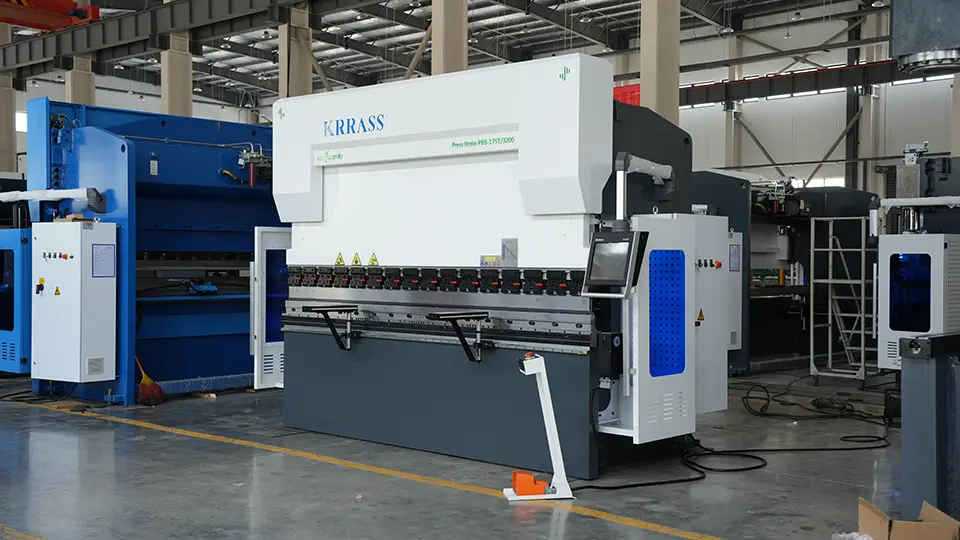Have you ever wondered how the most intricate metal parts, the perfect architectural structures, or even the simplest furniture are crafted with such precision? Spoiler alert: the magic behind much of modern manufacturing is none other than CNC technology, particularly CNC Press Brakes. But what exactly is CNC, and why are CNC Press Brakes such a big deal in the manufacturing industry? Strap in because you're about to find out.
- Exploring the World of CNC and CNC Press Brakes
- Why Invest in CNC Press Brake in manufacturing
- What are the components of CNC Press Brake
- The Working Principle of CNC Press Brake
- Types of CNC Press Brake
- Hydraulic vs Mechanical vs Electric
- CNC Controllers: The Brain Behind the Operation
- Operational Safety Measures
- Best Practices for High Precision
- How to Choose the Right CNC Press Brake
1.Exploring the World of CNC and CNC Press Brakes
Are you intrigued by the precision in modern manufacturing? Do you find yourself wondering how those immaculate bends and folds in metal products come about? If you're nodding yes, you're about to journey into the compelling universe of CNC technology and CNC Press Brakes.
About Press Brake
Let's start off by delving into Press Brakes. At its core, a Press Brake is a machine pressing tool for bending sheet and plate material, most commonly sheet metal. It's a staple in many metalworking operations and, believe it or not, your car or your kitchen appliances might owe their aesthetic curves to a Press Brake. But don't mistake this for a one-trick pony; these machines are versatile, capable of creating complex bends with extreme accuracy.
About CNC
Now, what does CNC mean? CNC stands for Computer Numerical Control. Think of it as the brain behind the brawn. CNC is a software that tells the machine—like a Press Brake—exactly how to make the bends, cuts, or folds in your metal sheets. Imagine a conductor leading an orchestra; CNC is that conductor, harmonizing various machine elements to craft a masterpiece.
CNC at Work
If CNC and Press Brakes are the dynamic duo of modern manufacturing, how does CNC actually function in this partnership? Essentially, CNC interprets a Computer-Aided Design (CAD) file and translates it into a list of precise movements for the Press Brake to execute. It's akin to feeding a well-crafted recipe into a highly-skilled chef's brain, expecting nothing less than culinary brilliance.
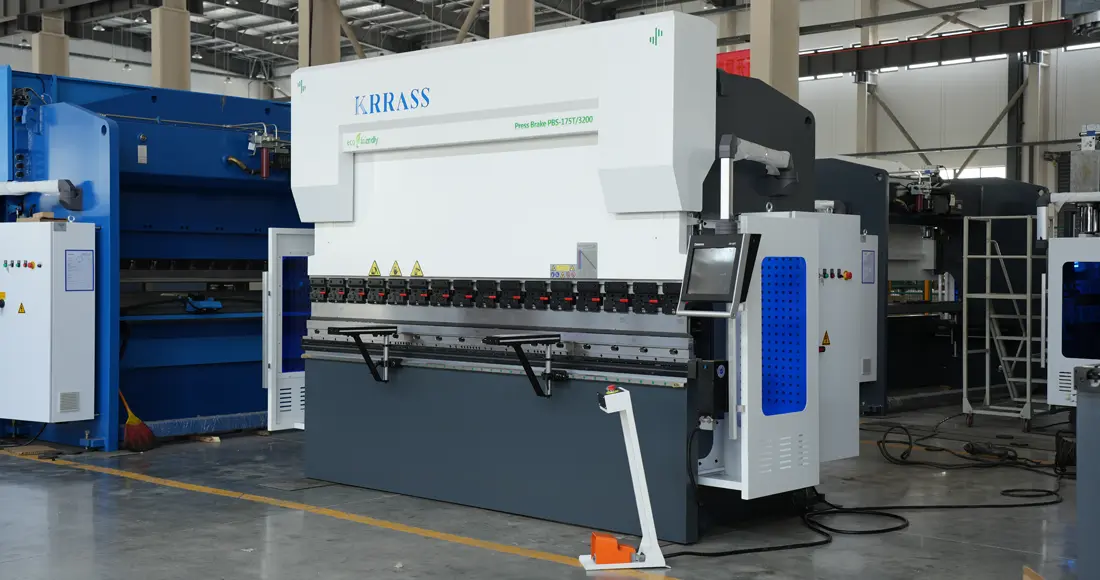
2.Why Invest in CNC Press Brake in Manufacturing
If the first chapter got your gears turning about CNC and CNC Press Brakes, you might now be wondering, "Is investing in a CNC Press Brake worth it for my manufacturing operations?" Allow us to shed some light on why this could be one of the best decisions you could make for your business.
Efficiency that Speaks for Itself
In any manufacturing setting, efficiency is key. CNC Press Brakes accelerate production times dramatically. These machines can quickly interpret CAD designs and execute precise bends, cuts, or folds, virtually eliminating the chance of human error. Time is money, and with a CNC Press Brake, you're saving heaps of both.
Unmatched Versatility
When we say a CNC Press Brake is versatile, we mean it can adapt to multiple production needs with ease. Whether you're handling different materials like aluminum, steel, or copper, or tackling projects of varying scales, a CNC Press Brake can be configured to meet those specific needs. This adaptability opens doors to a wider range of projects and clients.
Precision is the Name of the Game
In a field where even a millimeter off can result in a defective product, the high level of precision offered by CNC Press Brakes is invaluable. It allows for the most intricate bends and folds, delivering products that meet the most stringent quality standards. Your clients won't just be satisfied; they'll be impressed.
ROI That Makes Sense
Investing in a CNC Press Brake might seem like a hefty expense initially, but when you consider the long-term benefits—increased production, reduced labor costs, and higher quality products—the ROI justifies the upfront cost. It's not an expenditure; it's an investment in the future of your business.
More Reading: Press Brake vs Finger Brake: Which One is Right for You
3.The Working Principle of CNC Press Brake
So you're intrigued by CNC Press Brakes and perhaps even contemplating an investment. Understanding how these marvels of modern engineering work can give you a whole new appreciation for their capabilities. Let's lift the veil on the working principles behind CNC Press Brakes.
Basic Mechanics Involved
At its core, a Press Brake is fundamentally a machine designed to bend sheet metal. But what sets a CNC Press Brake apart? Well, think of a traditional press brake as a bicycle, and a CNC Press Brake as a high-speed motorcycle. Both get you from point A to point B, but the latter does it with far more power, speed, and efficiency.
The basic mechanics of a CNC Press Brake involve a simple yet effective setup: a punch and a die. The sheet metal is placed between these two, and hydraulic force is then applied to push the punch into the die, thus bending the sheet metal. This sounds straightforward, but the devil is in the details—or in this case, the CNC system.
Role of the CNC System
The CNC system in a CNC Press Brake is like the brain behind the operation. Imagine having a team of experts calculating every angle, every force, and every movement. Now imagine all of this expertise compacted into a computer system that does all this in real-time.
The CNC system controls everything from the depth of the punch to the angle of the bend, ensuring absolute precision and repeatability. It also allows for complex bending sequences, automatically adjusting settings for each new job. This eliminates manual adjustments, saves time, and significantly reduces the margin for human error.
So, when we talk about the working principles of a CNC Press Brake, it's not just about metal and hydraulics; it's about the perfect marriage of mechanical engineering and cutting-edge computing. This synergy allows for unprecedented levels of efficiency, quality, and reliability in your manufacturing process.
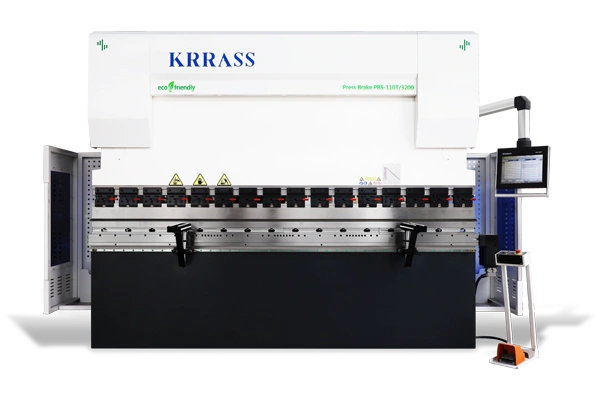
4.What are the Components of CNC Press Brake?
Understanding the components of a CNC Press Brake is like getting to know the members of a rock band. Each part has a specific role, and when they work in harmony, you get a performance that's out of this world. Let's meet the band members, shall we?
Frame
Consider the frame as the stage that holds the band together. It's the main structure providing stability and support, setting the stage for the machine's high-precision performance.
Ram
The Ram is your lead guitarist, responsible for the primary action. Using hydraulic transmission, it controls the up-and-down movement, harmoniously driven by the left and right cylinders fixed to the frame. The mechanical stop block fine-tunes this movement, all under the watchful eye of the numerical control system.
Worktable
Imagine the worktable as the keyboardist. Controlled by a button box, it moves the backgauge forward and backward, setting the stage for precise workpiece positioning. And guess what? You can control the movement to a jaw-dropping minimum reading of 0.01 millimeters. Now, that's precision!
Bed
The bed is where the action happens, just like a drummer laying down the beat. This is where your workpiece rests during the bending operation.
Hydraulic System
Think of the hydraulic system as the amplifiers, pumping up the energy level. Comprising hydraulic cylinders, pumps, valves, and hoses, it's responsible for generating the force needed for bending.
Synchronization System
The synchronization system is the band's conductor, making sure everyone stays in tune. Using servo valves and grating rulers, it forms a closed-loop hydraulic circuit for precise control.
Control System
The control system, or the brain, is like the band's frontman. It allows the operator to program bending parameters, sequences, and monitor the machine's status, coordinating the entire operation for a stellar performance.
Motor Controls
Motor controls serve as the special effects team, adding flair to the performance. They regulate the motors' speed, direction, and torque, adding dynamism to the bending process.
Back Gauge
The back gauge is the band's choreographer, responsible for the perfect positioning and timing. It ensures that the workpiece is aligned just right for consistent and accurate bending.
Control Panel
The control panel is the mixing desk, where the operator can input bending parameters, program sequences, and monitor the machine's status. It's the ultimate command center.
Foot Pedal
For those who like a hands-free operation, the foot pedal offers another level of control. It's like having an extra set of hands to manage functions such as clamping and releasing the workpiece.
Crowning System
The crowning system is the band's autotune, correcting any imperfections. It adjusts the shape of the bed to counteract any deformation, ensuring consistent bending accuracy.
Tooling
Tooling is like the band's collection of musical instruments, crucial for shaping the workpiece during bending. The variety of punches and dies can suit different project needs, providing flexibility and versatility.
Tool Storage
This is your backstage area where tools are neatly stored for quick changes. CNC Press Brakes often come with integrated tool storage systems for maximum efficiency.
Safety Features
Last but not least, safety features are like the security team, ensuring that the performance goes off without a hitch. These include safety light curtains, emergency stop buttons, and safety interlock devices.
Wiring and Cables
Wiring and cables are the unsung heroes, the roadies if you will. They connect various components for smooth electrical communication and performance, making sure the show goes on.
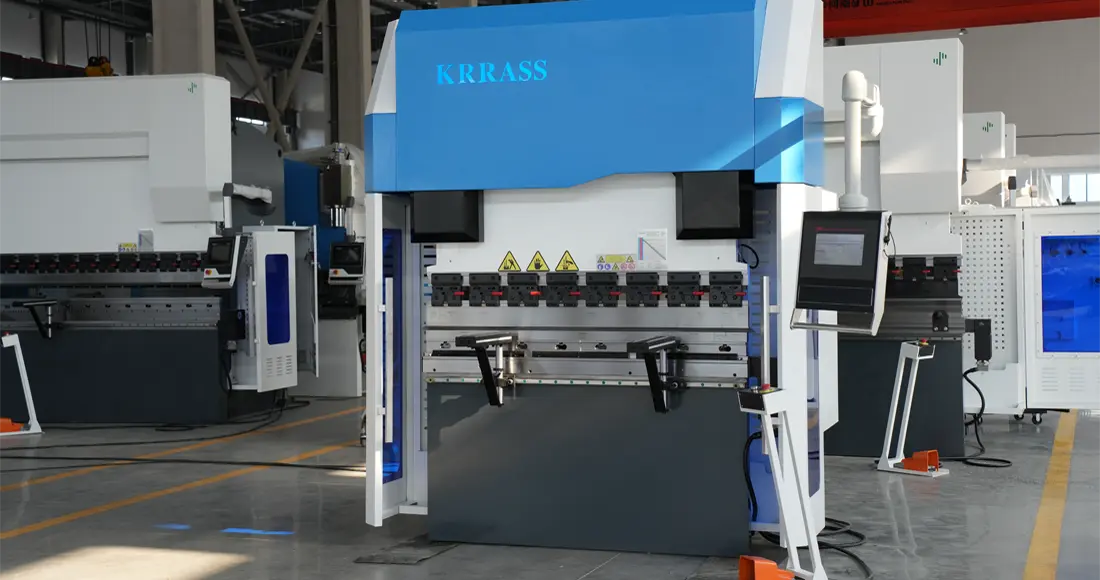
5.Types of CNC Press Brake
Much like how there's no one-size-fits-all solution in manufacturing, CNC Press Brakes come in various types to cater to different needs and applications. Each has its unique advantages and potential drawbacks, depending on your specific requirements. Let's explore these different types to help you make an informed decision.
Mechanical CNC Press Brake
The Mechanical CNC Press Brake is the classic model, upgraded with modern CNC controls. It operates using a mechanical flywheel to drive the ram. This type is generally less expensive and simpler to maintain. However, it offers less precision compared to its hydraulic and electric counterparts. Think of it as the trusty old pickup truck—it gets the job done, but maybe not with all the bells and whistles.
Hydraulic CNC Press Brake
Hydraulic CNC Press Brakes are the most common type in modern manufacturing setups. They use hydraulic fluid to generate force, allowing for more precise control of the ram and, by extension, the bending process. These are your luxury sedans—smooth, precise, and full of features.
Hybrid CNC Press Brake
The Hybrid CNC Press Brake combines features of both mechanical and hydraulic types. It uses a smaller hydraulic system to drive a mechanical system, offering a balance of precision and efficiency. If you're looking for a middle-ground solution that provides some of the best features of both worlds, this is your go-to choice.
Electric CNC Press Brake
Electric CNC Press Brakes are the new kids on the block, utilizing an all-electric servo motor to control the ram. They offer the highest level of precision and are energy-efficient but come with a higher upfront cost. They're like electric cars—sleek, efficient, and a glimpse into the future of manufacturing.
So there you have it—the various types of CNC Press Brakes, each with its unique set of features and advantages. Choosing the right one can be like finding the perfect car; it all depends on what you need it to do.
6.Hydraulic vs Mechanical vs Electric CNC Press Brakes
When it comes to choosing the right CNC Press Brake for your manufacturing needs, the debate often boils down to three main types: Hydraulic, Mechanical, and Electric. In this section, we'll lay down a comparative analysis, discussing the pros and cons of each and providing insights into their best uses.
Comparative Analysis
Mechanical Press Brakes have been around the longest but lack some of the finer control features of their Hydraulic and Electric cousins. Hydraulic models offer precision and are widely used, while Electric models are the future, offering unparalleled efficiency and precision.
Pros and Cons
| Type | Pros | Cons |
|---|---|---|
| Mechanical | Cost-effective, Simple to maintain | Less precision, Higher operating costs over time |
| Hydraulic | High precision, Versatility | Moderate maintenance costs, Slower speed |
| Electric | Highest precision, Energy-efficient | Higher upfront cost, Complex maintenance |
Best Uses for Each Type
So, which one is right for you? If you're a smaller operation focusing on simple projects, a Mechanical CNC Press Brake might suffice. For larger setups requiring a range of applications and materials, a Hydraulic model would be more appropriate. If you're on the cutting edge and need the utmost precision and efficiency, an Electric model is your best bet.
7.CNC Controllers: The Brain Behind the Operation
Imagine running an intricate manufacturing operation with just a set of manual controls—it would be like trying to pilot a spaceship with a steering wheel. This is where CNC Controllers step in, acting as the advanced 'brain' behind the machine, ensuring that your CNC Press Brake operates with pinpoint accuracy and efficiency.
Role of CNC Controllers
So what exactly do CNC Controllers do? Simply put, they interpret a Computer-Aided Design (CAD) file and convert it into a list of precise movements and commands for the Press Brake. The controller then executes these commands in a seamless flow, managing various elements like speed, direction, and force. Imagine a maestro leading an orchestra—every instrument has its part to play, but it's the conductor who brings them all together in harmony.
CNC Controllers offer several advantages over manual operations. These include but are not limited to increased precision, repeatability, and the ability to execute complex bending sequences. You can also expect a reduction in human error, ensuring that each bend and fold is just as accurate as the one before. This is akin to having a seasoned chef consistently cook a recipe to perfection, every single time.
And let's not forget the 'smart' capabilities of modern CNC Controllers. With features like real-time monitoring and data analysis, they offer insights into performance metrics, ultimately paving the way for predictive maintenance and reduced downtime. It's like having a built-in business analyst for your machinery, always crunching the numbers and recommending optimizations.
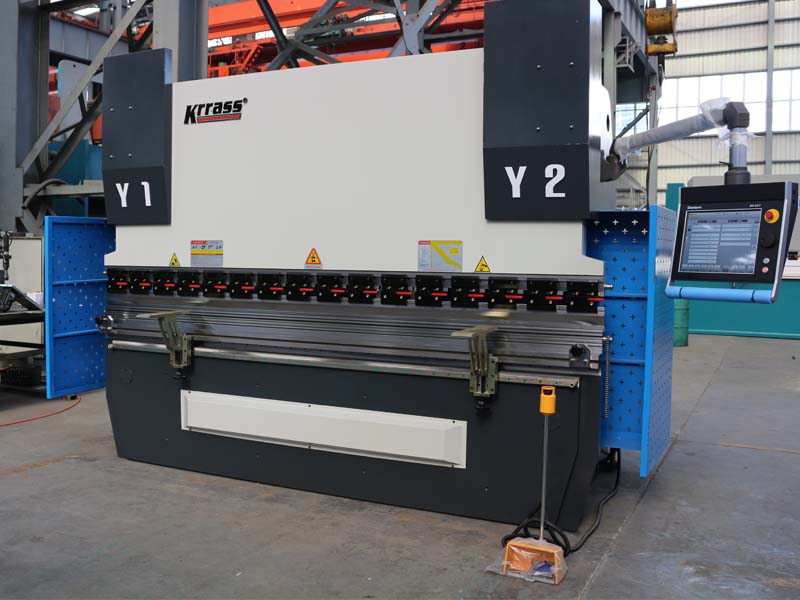
8.Operational Safety Measures
While CNC Press Brakes have made manufacturing a breeze, these machines are not toys. Safety is a critical component, and having robust operational safety measures is non-negotiable. Whether you're a veteran in the industry or just getting your feet wet, being well-versed in safety protocols is imperative.
Protective Gear
Would you ever play football without pads and a helmet? Probably not, and operating a CNC Press Brake should be no different. The first line of defense against any workplace hazard is proper protective gear. This generally includes safety goggles for eye protection, industrial gloves to guard against pinches and cuts, and steel-toe boots to protect your feet from heavy objects.
Some may argue that gear is uncomfortable or restricts movement, but there's no compromising on safety. The gear is designed to ensure that you walk away from your shift unscathed, allowing you to tackle another day's challenges with ease.
Safety Protocols
Protective gear is only half the battle won. The other half involves following a set of well-defined safety protocols. These are the 'rules of the road,' so to speak, and they're equally crucial for both rookies and seasoned pros.
Key safety protocols usually include machine inspections before and after use, maintaining a clean workspace to avoid trip hazards, and a thorough understanding of emergency stop mechanisms on your CNC Press Brake. It's also essential to keep unauthorized personnel away from the machine to prevent accidental operation or tampering.
These protocols aren't merely boxes to be checked off a list; they are an integral part of a safety culture that every responsible manufacturing unit should cultivate. Think of them as the 'software' that complements the 'hardware' of protective gear, making for a comprehensive safety package.
9.Best Practices for High Precision
Precision is the name of the game when it comes to CNC Press Brake operations. But how can you fine-tune your setup to deliver consistently high-quality results? It's an interplay between several factors—from machine calibrations and operator skills to the environmental conditions of your workspace.
Calibrations
Think of calibrations as the 'fine-tuning' of your CNC Press Brake. Regular calibrations ensure that the machine operates according to factory specifications. This involves checking and adjusting various components such as the back gauge, ram, and the hydraulic system. It's like tuning a guitar; you won't get the right notes unless each string is adjusted perfectly.
You don't have to be an expert to understand that even minor misalignments can lead to significant errors over time. That's why it's crucial to schedule routine calibrations and maintain a log for tracking adjustments and results.
Operator Skills
The CNC Press Brake may be a marvel of engineering, but it's only as good as the person operating it. Skilled operators bring a blend of technical know-how and practical experience, allowing them to make on-the-fly adjustments for optimal performance. Think of it as a master chef who can elevate a dish by adding just the right amount of spices.
Operators should undergo regular training, not just on the machine but also on interpreting blueprints, understanding material behavior, and safety protocols. Remember, a highly skilled operator is an invaluable asset, capable of ensuring high precision in every task.
Environmental Factors
Last but not least, never underestimate the impact of your work environment on machine performance. Factors like temperature, humidity, and even the level of dust in the air can affect precision. It's similar to how an athlete's performance can be influenced by the weather and track conditions.
To mitigate these environmental influences, consider installing climate control systems and maintaining regular cleaning schedules. Your CNC Press Brake is a finely-tuned instrument; treat it as such by providing the best possible operating conditions.
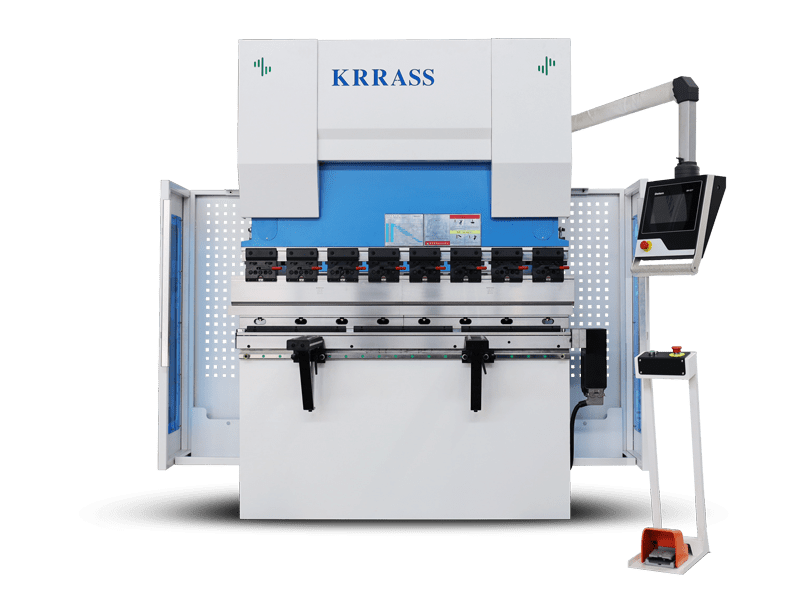
10.How to Choose the Right CNC Press Brake
Choosing the right CNC Press Brake can feel like navigating through a maze. There are numerous factors to consider, each crucial in its own way. The right machine can significantly streamline your production line and offer a healthy return on investment. So how do you make the right choice?
Understand Your Requirements
First things first, you've got to know what you need. Are you handling sheet metal or thicker metal plates? What's the volume of your production? These are not just questions; they are the foundation upon which your decision should be built. It's like choosing a car; you wouldn't opt for a two-seater if you have a family of five, would you?
Research the Brands
Just as you wouldn't buy a car without looking into the manufacturer's reputation, you shouldn't choose a CNC Press Brake without doing your homework on the brand. Look into factors such as reliability, customer service, and warranty terms. Reading reviews and asking for referrals can provide invaluable insights.
Check the Specs
The specifications of a CNC Press Brake can tell you a lot about its capabilities. Key specs to consider include tonnage, bending length, and the type of control system. Each of these aspects should align with your specific needs for optimal results. It’s like checking the engine, mileage, and safety features when buying a car.
Cost-Benefit Analysis
Last but not least, consider the machine's cost against the benefits it will bring. What’s the expected return on investment (ROI)? Does it have features that will save time and reduce labor costs? Sometimes spending a bit more upfront can save you a lot in the long run. It’s similar to opting for a fuel-efficient car—it might be pricier initially, but you save on fuel costs down the road.
Concluding Thoughts
You've now explored the vast landscape of CNC and CNC Press Brakes. From selecting the perfect machine to ensuring optimal safety and precision, you're well-equipped to take your manufacturing capabilities to the next level. But what if you want to explore beyond CNC Press Brakes? At Krrass, we don't just specialize in CNC Press Brakes; we are also leading manufacturers of Laser Cutting Machines and various sheet metal machinery. Explore our offerings to find the perfect solution for your manufacturing needs.
Read More:
